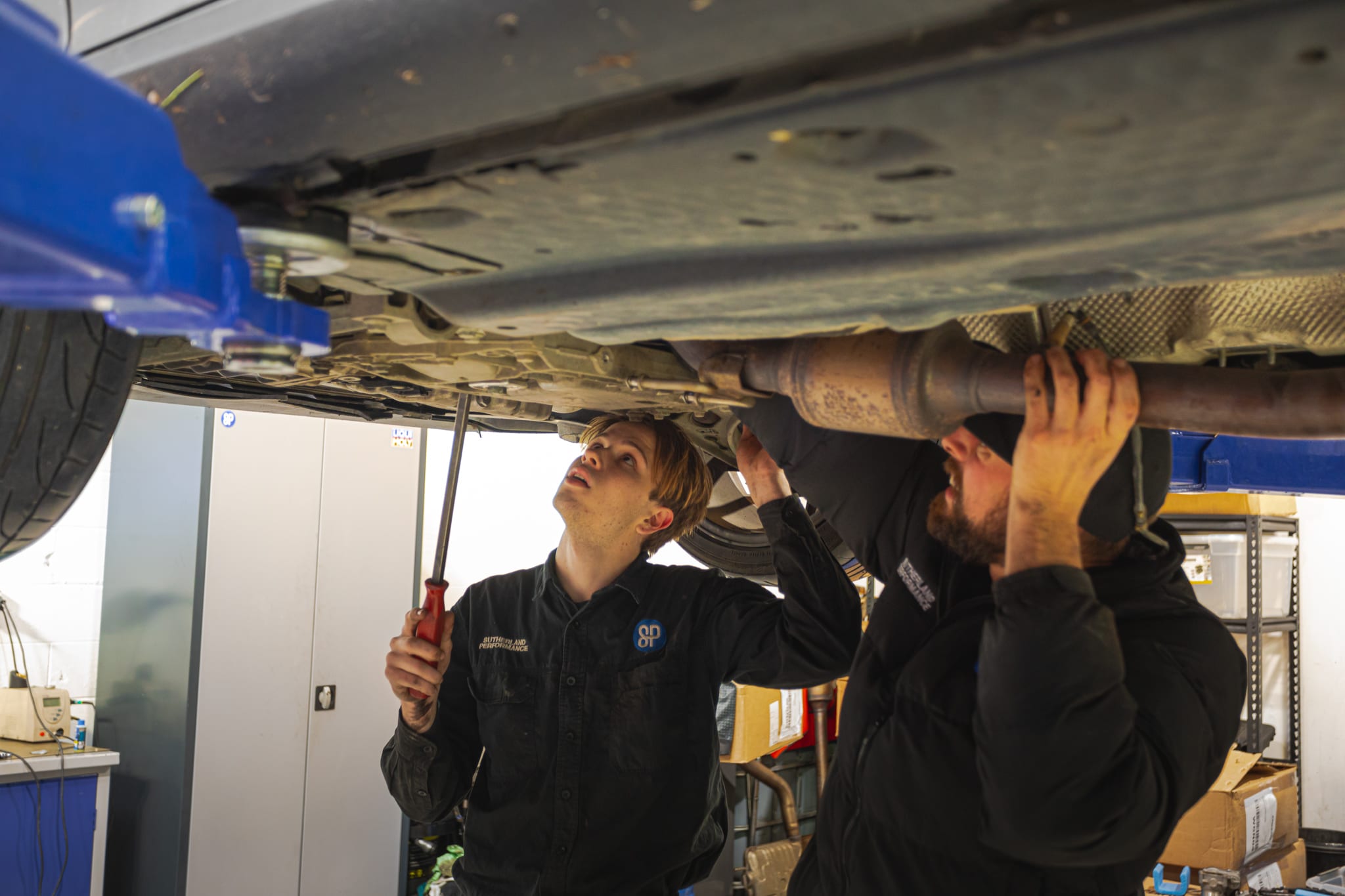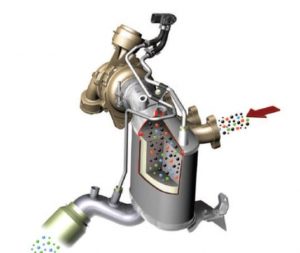If you own a modern diesel vehicle, you will most likely have a Diesel Particulate Filter fitted (DPF).
However, you may not be familiar with how they work and how you can maintain them. A DPF traps and stores harmful soot particles and must be burned off once the filter gets to a certain threshold. This is monitored by your vehicles Engine Control Unit (ECU).
Sutherland Performance is here to explain how you can maximise the performance of your DPF and ensure that you don’t spend a significant amount on repairs!
What is a diesel particulate filter, and what does it do?
A diesel particulate filter captures and retains exhaust soot particles reducing harmful emissions of diesel vehicles. Every DPF has a specific capacity, meaning the soot needs to be regularly burned off to empty the filter and prepare it for the following round of soot. This process can only be done under certain operating conditions. This means that if you make frequent short trips in your vehicle, the burn-off (Regeneration) procedure may not occur that efficiently or even at all. If your vehicle’s ECU cannot fulfil the burn off (Regeneration) requirements, a warning light will eventually illuminate on your dashboard. If continued failed attempts are made, your vehicle will eventually go into a limp-home mode, reducing power to prevent engine damage.
Common faults of diesel particulate filters
The most common fault of DPFs is an accumulation of ash causing them to block. Although the burn-off (regeneration) procedure can burn off the soot collected by the DPF a small amount of ash is retained. A good analogy being, imagine burning a piece of wood on the fire, you are always left with ash and this needs to be physically removed. Other common faults of the DPF system are failure of the pressure sensor that monitors the back pressure of your DPF and Exhausts Gas Temperature (EGT) sensor faults Not servicing your vehicle regularly with a DPF safe low ash oil can also be an underlying factor to cause blockage issues with your DPF. Some fuel and oil additives can also damage and block DPF’s, always check the specifications of anything you’re adding to your fuel tank and engine oil.
How can you maintain and resolve issues with diesel particulate filters?
If the warning light comes up on your dashboard, the first thing you can try is to take your vehicle for a longer drive at highway speeds, such as a good 30-minute drive on the motorway. However, many people don’t usually engage in these types of drives. If your DPF warning light illuminates and stays on after taking your vehicle for a long drive, you should take it to a workshop that specialises in diesel vehicles- don’t wait or keep driving with this light on as this can cause major damage to your engine. They can diagnose if the issue is rectifiable with a forced regeneration (Forced burn-off), with a clean or if the whole filter needs to be replaced.
Sutherland Performance has invested in specialised equipment for cleaning DPF’sthat no one else in Wellington region currently offers. Rather than suggesting to replace your DPF at a cost upwards of $5,000.00, we will instead clean it professionally and bring it back to life for as little as $650+GST.We also offer specialist additives from Liqui Moly to reduce DPF blockages.
Improve your diesel vehicle’s performance with Sutherland Performance
So, if you would like to find out more about DPF’s and how you can better maintain them, contact Wellington’s premier European vehicle workshop. The team at Sutherland Performance are always willing to help, if you’re having issues with your vehicle DPF, don’t hesitate to get in touch!



